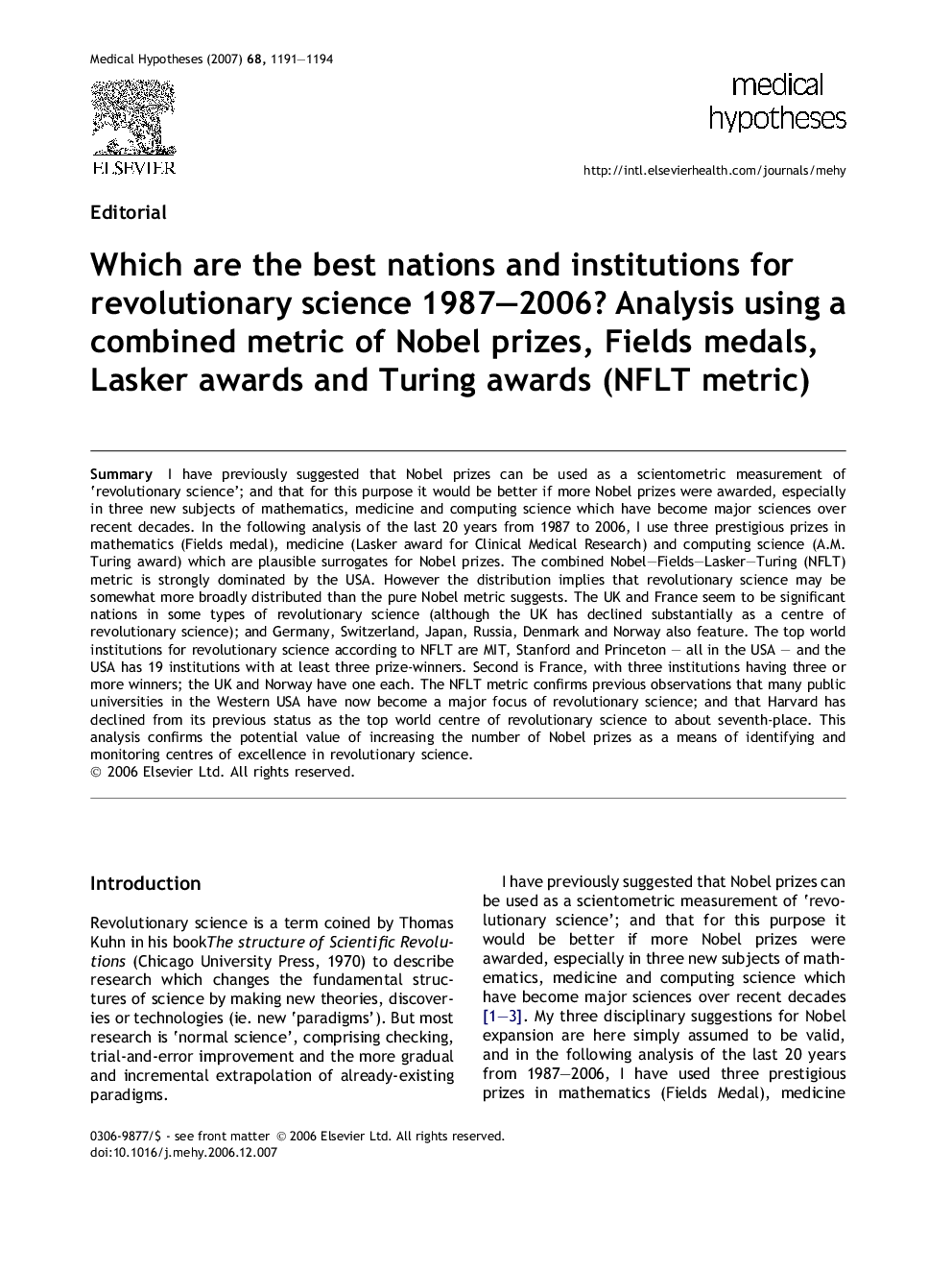| کد مقاله | کد نشریه | سال انتشار | مقاله انگلیسی | نسخه تمام متن |
|---|---|---|---|---|
| 2492005 | 1115098 | 2007 | 4 صفحه PDF | دانلود رایگان |

SummaryI have previously suggested that Nobel prizes can be used as a scientometric measurement of ‘revolutionary science’; and that for this purpose it would be better if more Nobel prizes were awarded, especially in three new subjects of mathematics, medicine and computing science which have become major sciences over recent decades. In the following analysis of the last 20 years from 1987 to 2006, I use three prestigious prizes in mathematics (Fields medal), medicine (Lasker award for Clinical Medical Research) and computing science (A.M. Turing award) which are plausible surrogates for Nobel prizes. The combined Nobel–Fields–Lasker–Turing (NFLT) metric is strongly dominated by the USA. However the distribution implies that revolutionary science may be somewhat more broadly distributed than the pure Nobel metric suggests. The UK and France seem to be significant nations in some types of revolutionary science (although the UK has declined substantially as a centre of revolutionary science); and Germany, Switzerland, Japan, Russia, Denmark and Norway also feature. The top world institutions for revolutionary science according to NFLT are MIT, Stanford and Princeton – all in the USA – and the USA has 19 institutions with at least three prize-winners. Second is France, with three institutions having three or more winners; the UK and Norway have one each. The NFLT metric confirms previous observations that many public universities in the Western USA have now become a major focus of revolutionary science; and that Harvard has declined from its previous status as the top world centre of revolutionary science to about seventh-place. This analysis confirms the potential value of increasing the number of Nobel prizes as a means of identifying and monitoring centres of excellence in revolutionary science.
Journal: Medical Hypotheses - Volume 68, Issue 6, 2007, Pages 1191–1194